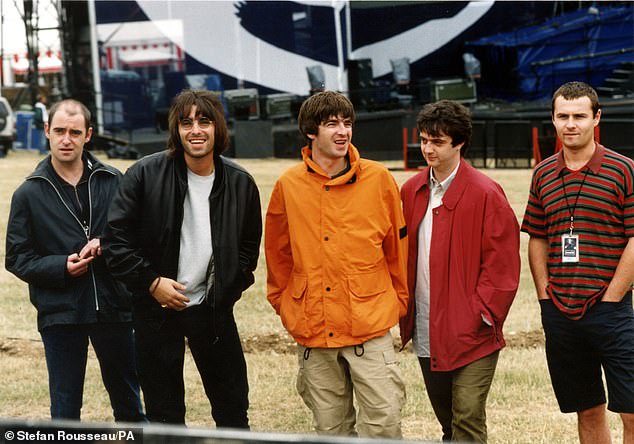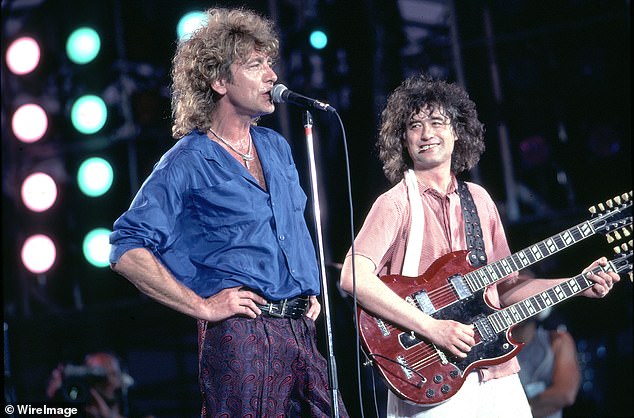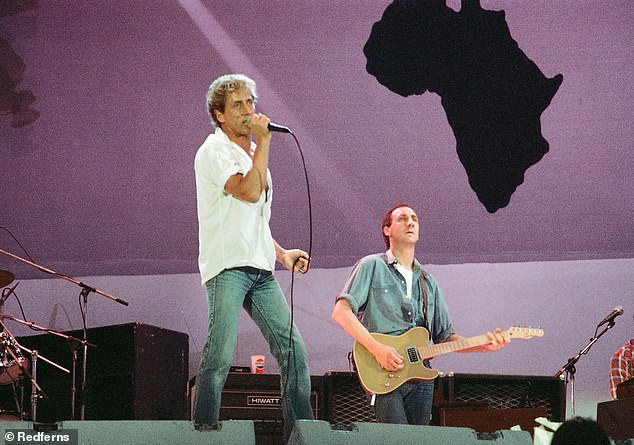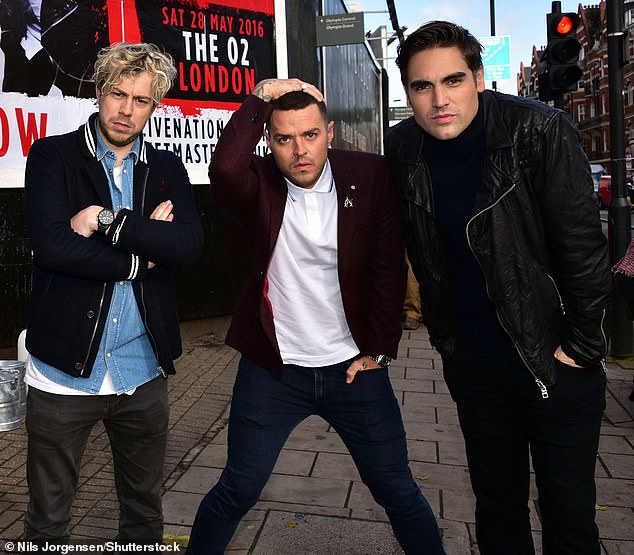The music industry’s biggest breakups and revamps: As Oasis reform, incredible graph reveals how long it took for popular bands like Blink-182, Take That and Girls Aloud to come back
This weekend marks the start of the mad rush for Oasis tickets – heralding one of the biggest rock reunions the world has ever seen.
The ’90s icons will perform 17 shows in the UK and Ireland next summer – their first since 2009 – with more concerts to be announced.
While 15 years is quite a gap between a band’s careers, it’s far from the longest time between a breakup and a reconciliation.
Some groups even waited twice as long before burying the hatchet.
MailOnline’s graph shows how long it took for popular acts to get back together, from Blondie to The Stone Roses, Take That and The Who.
This weekend marks the start of the mad rush for Oasis tickets – heralding one of the biggest rock reunions the world has ever seen
No other major group waited longer to reform than ABBA, one of the best-selling music groups of all time.
The Swedish pop giants split in 1982 and reunited in 2016 to work on new material and their digital avatar concert. A period that spanned 34 years (although their new album wasn’t released until 2021).
Meanwhile, London folk band Fairground Attraction split in 1990, but are reuniting this fall for a series of shows, ending a 34-year hiatus.
And blues rockers Cream called it quits in 1968, during their heyday, before reuniting for a Rock and Roll Hall of Fame performance in 1993 – a 25-year hiatus.
Other bands that waited 20 years or more to call a truce include The Stooges (29 years), The Velvet Underground (25 years), Pink Floyd (24 years) and The Police (21 years).
On the other side of the scale is The Who broke up in 1983, but decided to reunite two years later for Live Aid.
Led Zeppelin similarly reunited for a major charity concert, five years after drummer John Bonham had ended the group. However, it was a performance the rockers would rather forget.

Pictured, Oasis at Knebworth in 1996. Many Oasis fans are hoping this is the line-up that will appear next year, with Paul McGuigan (second right) on bass and Alan White (far right) on drums. Paul ‘Bonehead’ Arthurs (far left) has already been confirmed to join the brothers, according to reports

The Off-Break Performance They’d Rather Forget: Led Zeppelin’s Robert Plant and Jimmy Page at Live Aid, Philadelphia, July 13, 1985

The Who reunited for Live Aid, just two years after Pete Townsend (right) disbanded the group
Industry experts say Oasis will earn as much as £400m from their series of comeback performances, which could also include Knebworth.
But Dr Glenn Fosbraey, associate dean of the humanities and social sciences at the University of Winchester, says money is not always the reason bands re-form.
‘Even those who previously shuddered at the idea of a reunion have succumbed, with bands like Pink Floyd, The Police and Led Zeppelin all coming out for an unexpected last hurrah,’ Dr Fosbraey told MailOnline.
‘For a lot of bands it’s obviously about the money; the big bucks they can’t make with their solo careers, but for some it’s the chance to pick up a part of their lives that belongs in the past.
‘And let’s face it, who would turn down the opportunity to go back in time if it presented itself?’
According to Dr Jadey O’Regan, lecturer in contemporary music at the Sydney Conservatorium of Music, money and nostalgia are important factors.
‘Because streaming reduces the income songwriters and artists can earn from album and single sales, live performance is one of the ways a band can earn a significant income,’ she told MailOnline.
“Bands getting back together after a long hiatus can also give new fans the chance to see an artist live that they wouldn’t normally experience.”

The Spice Girls reunited in 2007, nine years after Geri Halliwell (second from right) left the group and seven years after the remaining members called it quits.

Razorlight (pictured) broke up when drummer Andy Burrows (far right) left in early 2009, but the line-up reunited in 2021 and are now preparing for a new album.

Busted reunited in 2015 after a decade, despite Charlie Simpson (right) vowing never to return
Sometimes members achieve a breakthrough in their personal relationship, which clears the way for them to continue their musical activities.
And as members age, many face health issues that prompt their former colleagues to reconnect – as was recently the case with Fairground Attraction and Blink-182.
Of course, many beloved bands – like the Beatles and the Smiths – never managed to get back together before one of their members died.
After John Lennon’s death in 1980, the surviving Beatles completed three more songs he had left unfinished, including the No. 1 hit “Now and Then.”
As for The Smiths, singer Morrissey made the shocking revelation this week that he and Johnny Marr have been given a “lucrative offer” to reform the band until 2025, despite the death of bassist Andy Rourke last year.
According to Morrissey, he said ‘yes’ to the offer, while Marr ‘ignored’ it.
‘Although his reunion plans were thwarted by former bandmate Johnny Marr, Morrissey joins the growing list of pop stars who simply can’t resist the temptation to get the band back together,’ Dr Fosbraey told MailOnline.
